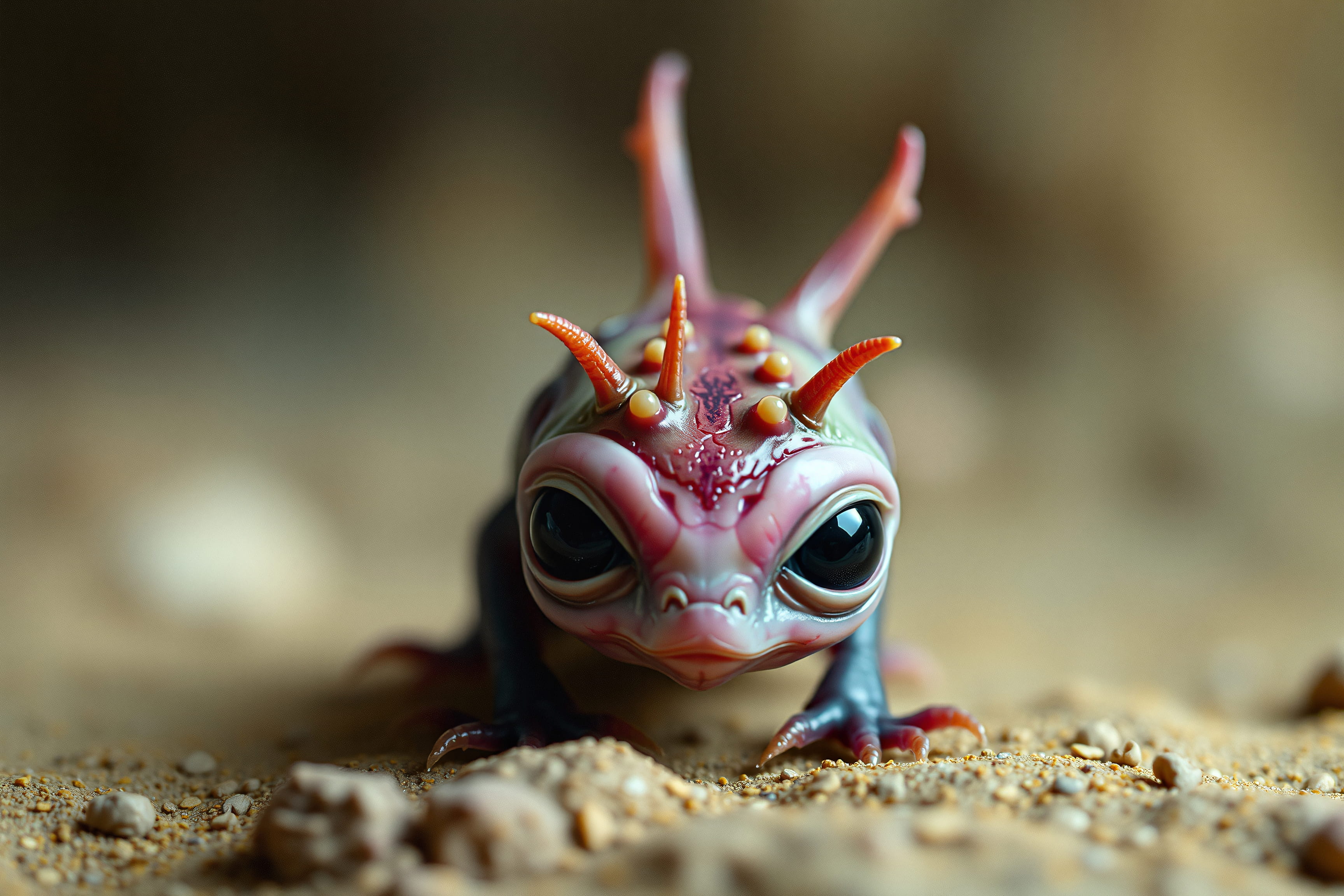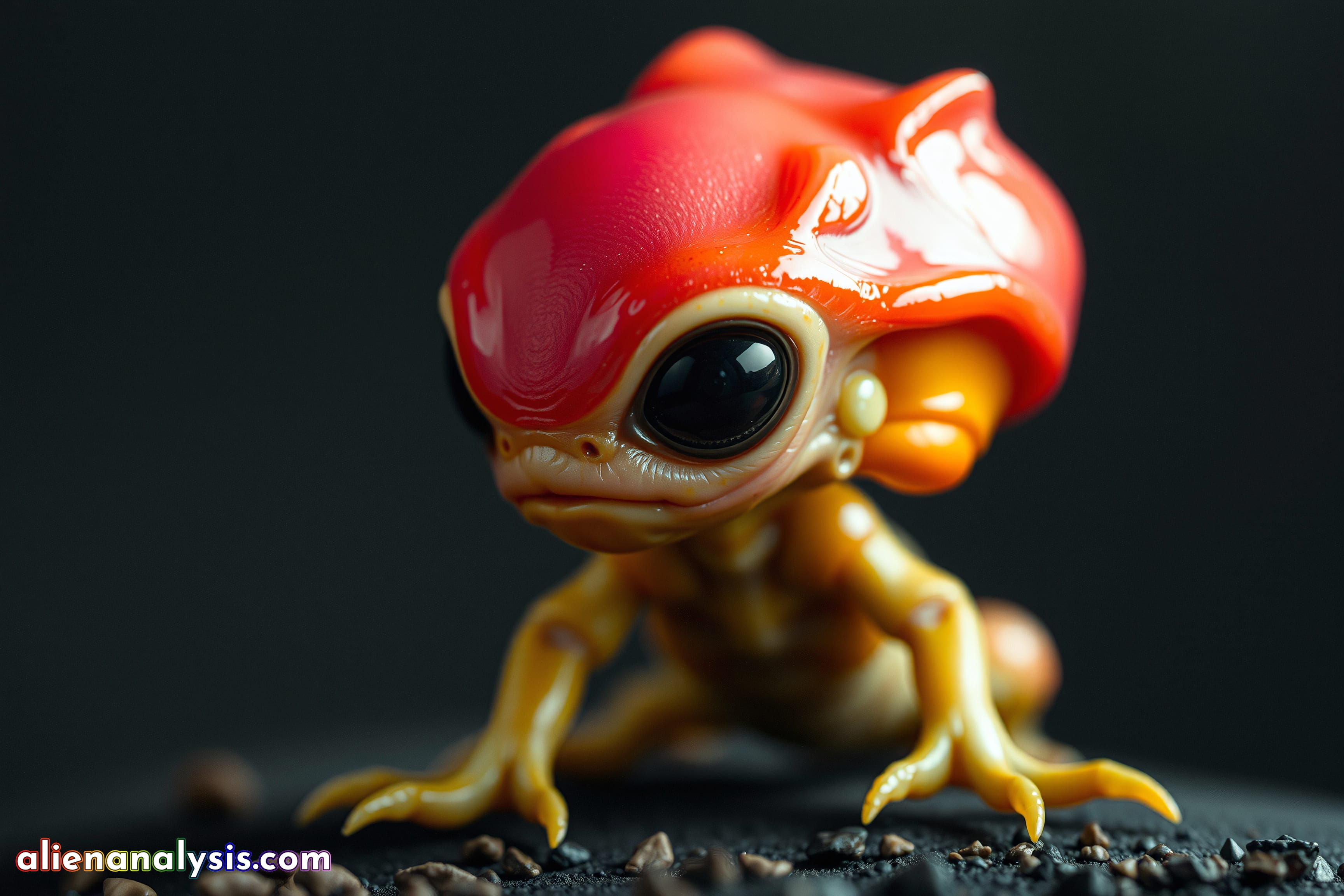
Crustaceoformis terraquatica

The entity depicted in the image appears to be a larval or juvenile stage of a species that could be classified within the genus Crustaceoformis terraquatica, meaning "land and water crustacean-like being." This classification reflects its hybrid features that suggest adaptations to both aquatic and terrestrial environments, much like certain Earth crustaceans.
Morphological Characteristics:
Exoskeleton and Head: The being possesses a glossy, carapace-like structure on its head, which is a hallmark of many crustacean species. This shell may provide protection against physical damage and environmental factors such as desiccation or predation. The bright red coloration could be a form of aposematism, signaling to potential predators that the creature is either toxic or unpalatable, or it could serve as a method of thermoregulation by absorbing heat.
Eyes: The large, glossy eyes suggest that this being is highly visual, relying on acute vision to navigate its surroundings. The eyes are well-suited for detecting movement and changes in light, which would be beneficial in both aquatic and dim terrestrial environments. This could indicate that the species has evolved to be active during twilight or nocturnal hours.
Limbs: The limbs appear robust and flexible, with digits that could provide grip on various surfaces, from underwater rocks to terrestrial substrates. The positioning of the limbs indicates that this being is capable of both crawling and perhaps swimming or burrowing, demonstrating versatility in movement.
Sensory Organs: Small sensory nodules near the head suggest advanced detection capabilities. These could be analogous to antennae or chemoreceptors found in crustaceans, used to sense chemical changes in the environment, detect food, or communicate with others of its kind.
Behavioral and Environmental Adaptations:
Habitat: The combination of aquatic and terrestrial traits suggests that Crustaceoformis terraquatica inhabits environments that require adaptability to both land and water. It could thrive in tidal zones, where the landscape shifts regularly between submerged and exposed, or in swampy areas that are perpetually damp. The creature’s morphology supports a lifestyle that involves foraging in shallow waters or on wet land, where it can exploit resources in both realms.
Feeding Behavior: Given its limb structure and large eyes, this being is likely an opportunistic feeder, capable of hunting small prey or scavenging organic material. Its behavior might involve digging through sediment or leaf litter to find food, much like terrestrial crabs or amphibians.
Developmental Stage: The entity appears to be in an early developmental stage, akin to a larva or juvenile. As it matures, it may undergo significant morphological changes, such as hardening of the exoskeleton, elongation of limbs, or development of additional sensory or defensive structures.
Conclusion:
The being from the genus Crustaceoformis terraquatica represents a species well-adapted to a dual existence in both water and on land. Its physical characteristics suggest a young organism, possibly at a larval stage, poised to grow into a more complex adult form. The bright coloration and versatile limbs indicate a species that thrives in variable environments, capable of surviving and exploiting resources in both aquatic and terrestrial ecosystems. As it matures, this being is likely to become more adept at navigating its habitat, playing a crucial role in its ecological niche.